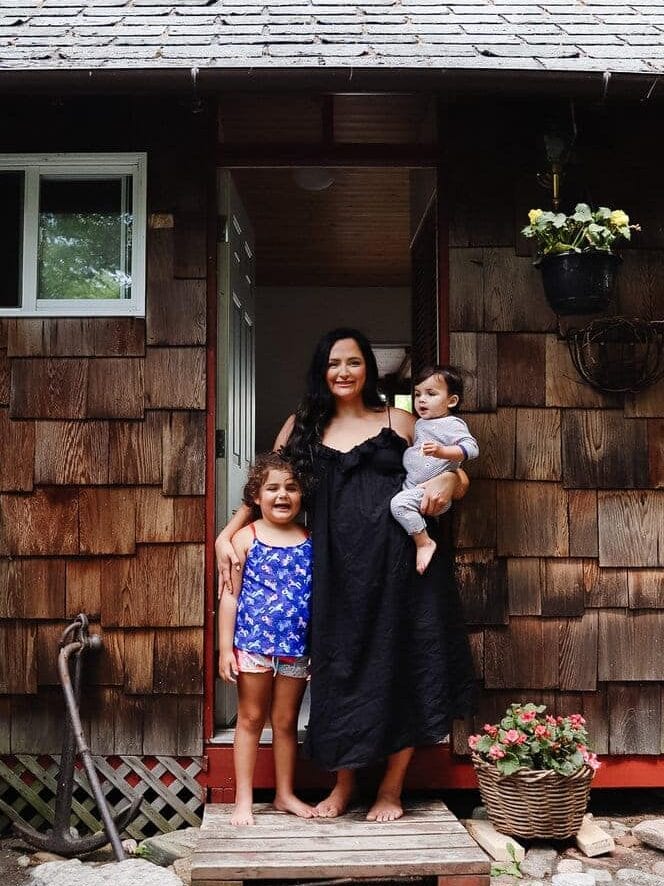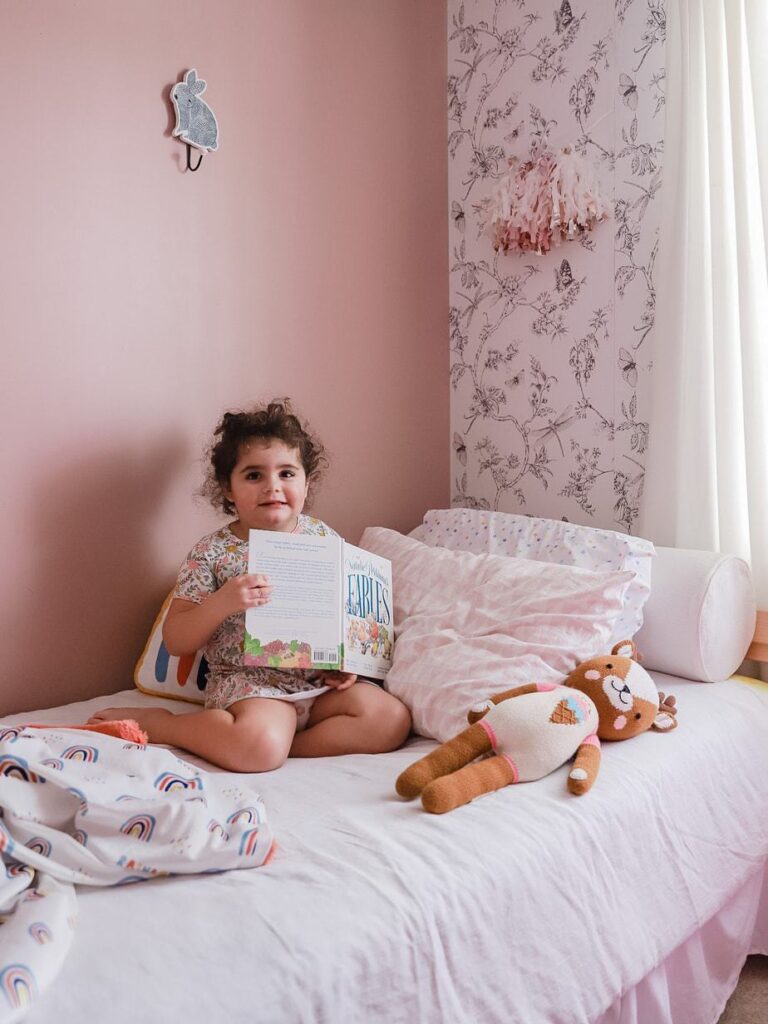Small Space Living with a Family: Tips and Tricks for Making the Most of Your Limited Space
Post Summary: If you want to learn how to live in a small house with family, then this is for you! We’ll share the benefits and tips to solve some of the biggest problems for families in smaller homes.

I’ll be the first to admit that living in a small space with a family can be a challenge, but it’s becoming increasingly common in today’s world. Whether you’re downsizing or simply choosing to live in a smaller home, there are ways to make the most of your space and create a comfortable and functional living environment for you and your family.
One of the first things I always consider when living in a small space with family is organization. With limited space, it’s important to maximize storage and keep clutter to a minimum. This means getting creative with storage solutions, such as utilizing under-bed storage, hanging shelves, and investing in multi-functional furniture.
Another thing to consider when you’re living in a small house with family is creating designated areas for different activities. For example, you may need to combine your living room and dining room into one space, but it’s important to still create separate areas for lounging and eating. I do this through room dividers, but not the ones you think! Instead, I focus on creating separation with rugs, and furniture placement. With some thoughtful planning and a bit of creativity, small space living with a family can be both practical and enjoyable.
But let’s dive more into living in a small house with family below!
Living in a Small House with Your Family
Like I said, I know firsthand that living in a small space with your family can be challenging, but in my experience, it is the most rewarding. In this section, we’ll talk about the concept of small spaces, the benefits of living in a small space, and the challenges faced by families.
The Concept of Small Spaces
Small spaces refer to living spaces that are typically less than 1,900 square feet (depending on where you live of course). If you live in The United States a typical home ranges from 2,014 sq ft, but in Europe, the average size home is 480 sq ft (or 45 square meters). This can even include tiny houses, studio apartments, or even just a small house or apartment. The concept of small spaces is becoming increasingly popular, as people look for ways to simplify their lives and reduce their environmental impact.
Which is exactly why I started Cottage Living & Style in the first place. I fell in love with our small 1200 sq ft cottage, and even more in love with small spaces when we bought our 400 sq ft cabin!
Small Space Tours
Our Family’s New Tiny Cabin!
In 2021, we got the keys to our tiny island cabin. Since then we’ve been slowly renovating and updating the space to fit our family of four. Here’s a look at our first cabin tour and what we hoped to do with it.
Benefits of Living in a Small Space
In my five years of living in small spaces with a family, the biggest benefit is that it forces you to be more intentional about the things you bring into your home. Which can help you save money and reduce clutter. It also encourages you to spend more time together as a family, as there are fewer distractions and more opportunities for quality time.
Another major benefit of living in a small space is that it can be more environmentally friendly. Smaller homes require less energy to heat and cool, and they often have a smaller carbon footprint overall. This can be a great way to reduce your impact on the environment and live a more sustainable lifestyle.
Challenges Faced by Families
But I wouldn’t be honest if I didn’t say that there were some challenges too. Of course, the biggest being is finding enough storage space for all of your belongings. This can be especially difficult if you have young children, who tend to accumulate a lot of toys and other items.
Another challenge is finding privacy within a small space. Which is something I personally struggle with! It’s especially difficult if you have multiple family members sharing a single room or if you have limited options for separating different areas of the home. It can also be challenging to find space for everyone to work or study, especially if you have children who need a quiet place to do homework.
However, despite these challenges, many families (mine included) find that living in a small space can be a rewarding and fulfilling experience. By being intentional about the things you bring into your home and focusing on quality time together as a family, you can create a warm and welcoming environment that everyone can enjoy.
Maximizing Storage and Organization

When living in a small space with a family, maximizing storage and organization is crucial to ensure that the space remains functional and clutter-free. Here are some tips and tricks to help you make the most of your storage space:
Creative Storage Solutions
Think outside the box when it comes to storage solutions. Look for furniture pieces that double as storage, such as ottomans with hidden compartments or beds with built-in drawers. Utilize vertical space by installing shelves or hanging storage baskets. Use under-bed storage containers to store out-of-season clothing or extra linens.
Decluttering Strategies
Decluttering is an essential part of maximizing storage space. Start by getting rid of items you no longer use or need. Donate or sell items that are in good condition, and dispose of items that are no longer usable. Create designated spaces for items that tend to accumulate, such as mail, toys, and shoes. Encourage everyone in the family to put items back in their designated space after use.
Organizing Essentials
Invest in organizing essentials such as closet organizers, drawer dividers, and storage bins. Use clear storage containers to make it easy to see what’s inside. Label containers and shelves to keep everything organized and easy to find. In the kitchen, use drawer dividers to keep utensils and gadgets organized. Hang pots and pans from a ceiling rack to free up cabinet space.
By implementing these storage and organization strategies, you can make the most of your small space and keep it clutter-free. Remember to regularly declutter and reorganize to maintain a functional and organized living space for you and your family.
Designing for Family Life
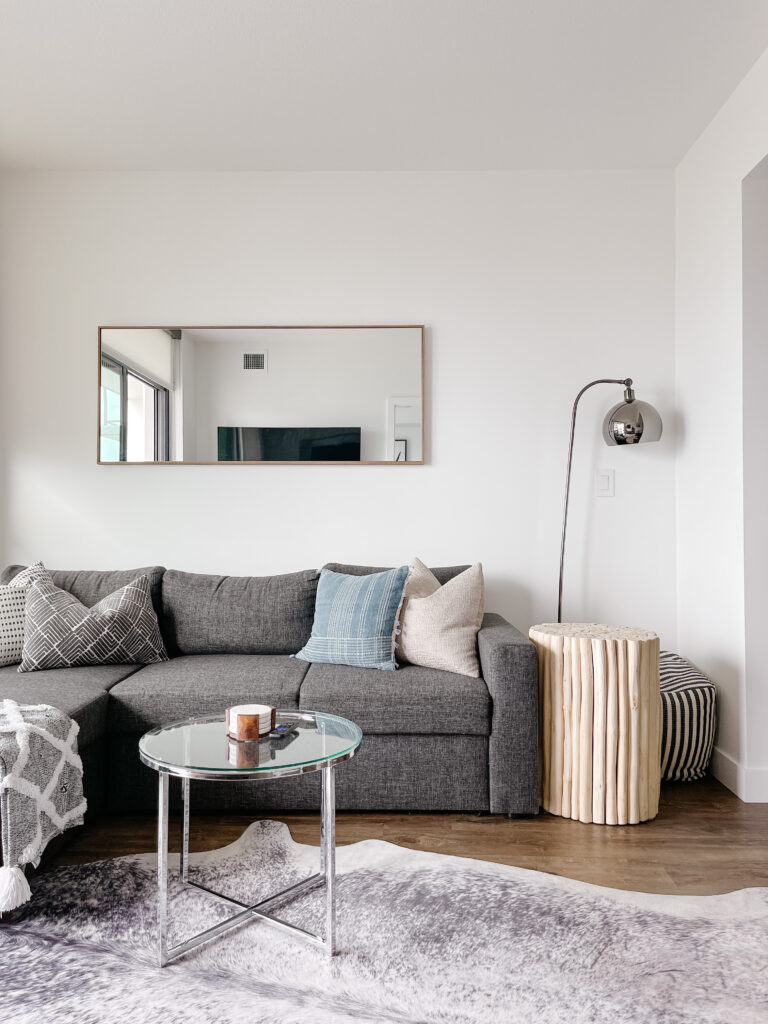
When living in a small space with a family, it’s important to design your home in a way that maximizes functionality and comfort. Here are some design tips to help you create a family-friendly living space.
Furniture for Small Family Homes
When choosing furniture for a small family home, it’s important to prioritize functionality and versatility. Look for furniture pieces that can serve multiple purposes, such as a storage ottoman or a coffee table with built-in storage. Bunk beds and Murphy beds are also great options for maximizing sleeping space in a small home.
Incorporating Child-Friendly Elements
If you have children, it’s important to incorporate child-friendly elements into your home design. Consider creating a designated play area for your kids, complete with storage for toys and games. You can also incorporate child-sized furniture into your home, such as a kid-sized table and chairs.
Design Ideas for Shared Spaces
In a small family home, it’s common for multiple family members to share the same space. To make shared spaces work for everyone, consider using room dividers or curtains to create separate areas. You can also use furniture placement to create distinct zones within a room.
When designing for family life in a small space, it’s important to prioritize functionality and versatility. By incorporating child-friendly elements and using creative design ideas, you can create a comfortable and functional living space for your family. And with the help of retailers like IKEA, you can find affordable and stylish furniture options that work well in small spaces.
Strategies for Functional Living
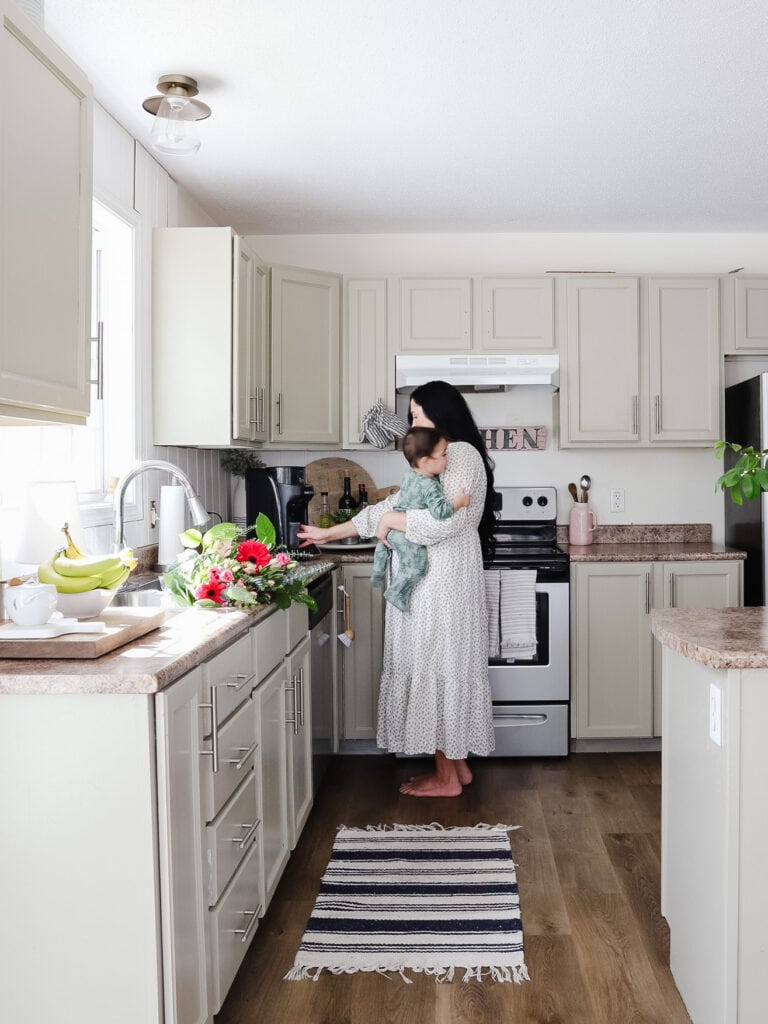
Living in a small space with a family can be challenging, but with the right strategies, it can also be rewarding. Here are some tips to help you make the most of your space and create a functional home for your family.
Kitchen Efficiency
In a small space, the kitchen can quickly become crowded and disorganized. To maximize your kitchen’s efficiency, consider the following tips:
- Use open shelving or hanging racks to store pots, pans, and utensils.
- Install a magnetic knife strip to keep knives within reach without taking up counter space.
- Use a rolling cart or island to create additional counter space when needed.
- Opt for compact appliances, such as a slimline dishwasher or a narrow refrigerator.
Laundry Solutions
In a small space, doing laundry can be a challenge. Here are some tips to help you make the most of your laundry area:
- Install a wall-mounted drying rack to save floor space.
- Use a compact washer and dryer, or consider a combination unit that can wash and dry in one cycle.
- Use a laundry hamper with a lid to keep dirty clothes out of sight.
Space-Saving Tips for Bedrooms
In a small space, bedrooms can be a challenge, especially if you have multiple children. Here are some tips to help you make the most of your bedroom space:
- Use bunk beds or loft beds to create more floor space.
- Install a Murphy bed to create a dual-purpose room.
- Use under-bed storage to keep clothes and toys organized and out of sight.
- Opt for minimalist decor to create a clean and open feel.
By following these strategies, you can create a functional and comfortable home for your family, even in a small space.
Maintaining Personal Space and Privacy
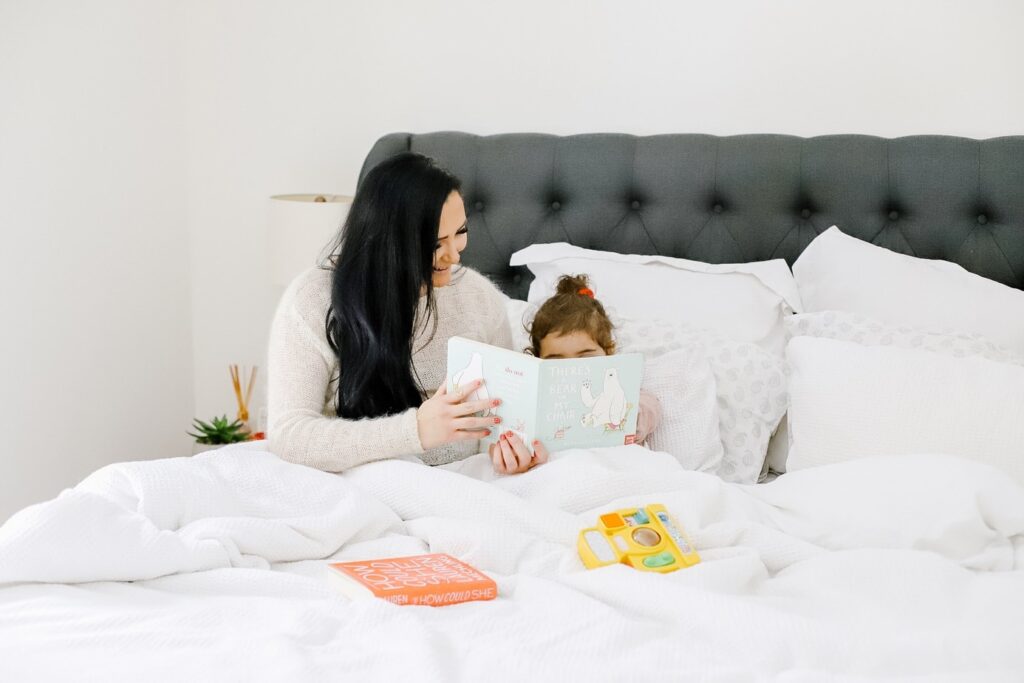
Living in a small space with a family can be challenging, especially when it comes to maintaining personal space and privacy. However, with a few smart solutions, you can create zones that allow for alone time and privacy, even in a compact living environment.
Creating Alone Time Zones
It’s important for each family member to have some alone time, whether it’s for reading, studying, or just relaxing. Creating designated “alone time zones” can help make this possible. For example, you could set up a small desk in a corner of the living room or create a cozy reading nook in a bedroom. By setting aside a specific area for alone time, family members can retreat to their own space when they need a break.
Privacy Solutions in Compact Living
Privacy can be difficult to achieve in a small space, but there are ways to create a sense of separation between different areas. One option is to use room dividers or curtains to create separate zones within a room. You could also use shelving units or bookcases to create a physical barrier between different areas.
Another privacy solution is to use storage solutions that help keep belongings organized and out of sight. For example, using under-bed storage boxes or hanging organizers can help keep clutter at bay and create a more organized living space. By keeping belongings out of sight, family members can feel more comfortable and relaxed in their personal space.
Overall, maintaining personal space and privacy in a small living environment requires some creativity and smart solutions. By creating designated alone time zones and using privacy solutions like room dividers and storage solutions, you can make a small space feel more comfortable and functional for the whole family.
Lifestyle Adaptations

Living in a small space with a family can be challenging, but it can also be an opportunity to embrace a minimalist mindset and adopt sustainable living practices. Here are some lifestyle adaptations that can help you make the most of your small space.
Embracing a Minimalist Mindset
One of my goals this year is to be more intentional about what I bring into our home. Embracing a minimalist mindset can help you declutter your space and make room for the things that matter most to you.
Which is why I wanted to share a few things that I’m working on below:
- Regularly declutter your home to get rid of things you no longer need or use.
- Invest in multi-functional furniture that can serve multiple purposes.
- Avoid buying things on impulse and instead, focus on purchasing items that you truly need and will use.
Family Activities in Small Spaces
Living in a small space doesn’t mean that you have to sacrifice family time. With a little creativity, you can find ways to enjoy quality time with your family in your small home. Here are some ideas:
- Play board games or card games that don’t require a lot of space.
- Have a movie night and create a cozy atmosphere with blankets and pillows.
- Cook meals together and involve the whole family in the process.
Sustainable Living Practices
Living in a small space can also be an opportunity to adopt sustainable living practices. Here are some ideas to get you started:
- Use energy-efficient appliances and light bulbs to reduce your energy consumption.
- Install low-flow showerheads and faucets to conserve water.
- Use reusable containers for food storage instead of disposable ones.
By embracing a minimalist mindset, finding creative ways to spend time with your family, and adopting sustainable living practices, you can make the most of your small space and create a comfortable home for you and your family.
External Storage and Transportation

When living in a small space with a family, it is important to make the most of every inch of space available. This includes utilizing external storage options and managing transportation needs efficiently. Here are some tips to help you make the most of your space and transportation options.
Utilizing Off-Site Storage
Off-site storage can be a great option for items that you don’t use frequently, such as seasonal clothing, sports equipment, or extra furniture. Look for a storage facility that is convenient to your home and offers flexible rental options. You can also consider sharing storage space with a friend or family member to save money.
When storing items, make sure to label everything clearly and keep an inventory of what you have stored. This will help you avoid duplicate purchases and make it easier to find what you need when you need it.
Managing Transportation Needs
When it comes to transportation, it’s important to choose options that work for your family’s needs. If you live in a city, consider using public transportation or walking or biking to get around. This can save you money on gas and parking, and it’s also better for the environment.
If you do need a car, consider downsizing to a smaller vehicle that is more fuel-efficient. Since downsizing and moving out of the city, we sold our brand-new car and only bought a used now. It’s less expensive and we are looking for something with good fuel economy. But you can also look into car-sharing services or renting a car when you need it instead of owning one. We have a few friends who live in the city and own a tiny cottage near us, and they rent a car when they come to the cottage for a few weeks or weekends. In the end, it saved them money and they still managed to get where they were going.
Bikes can also be a great transportation option, especially for short trips around town, perfect if you live in a city. Look for bikes that are lightweight and easy to store, such as folding bikes or bikes with detachable wheels. You can also consider adding a bike rack to your car to make it easier to transport bikes when you need to.
By utilizing off-site storage and managing your transportation needs efficiently, you can make the most of living in a small space with family and still enjoy all the benefits.

